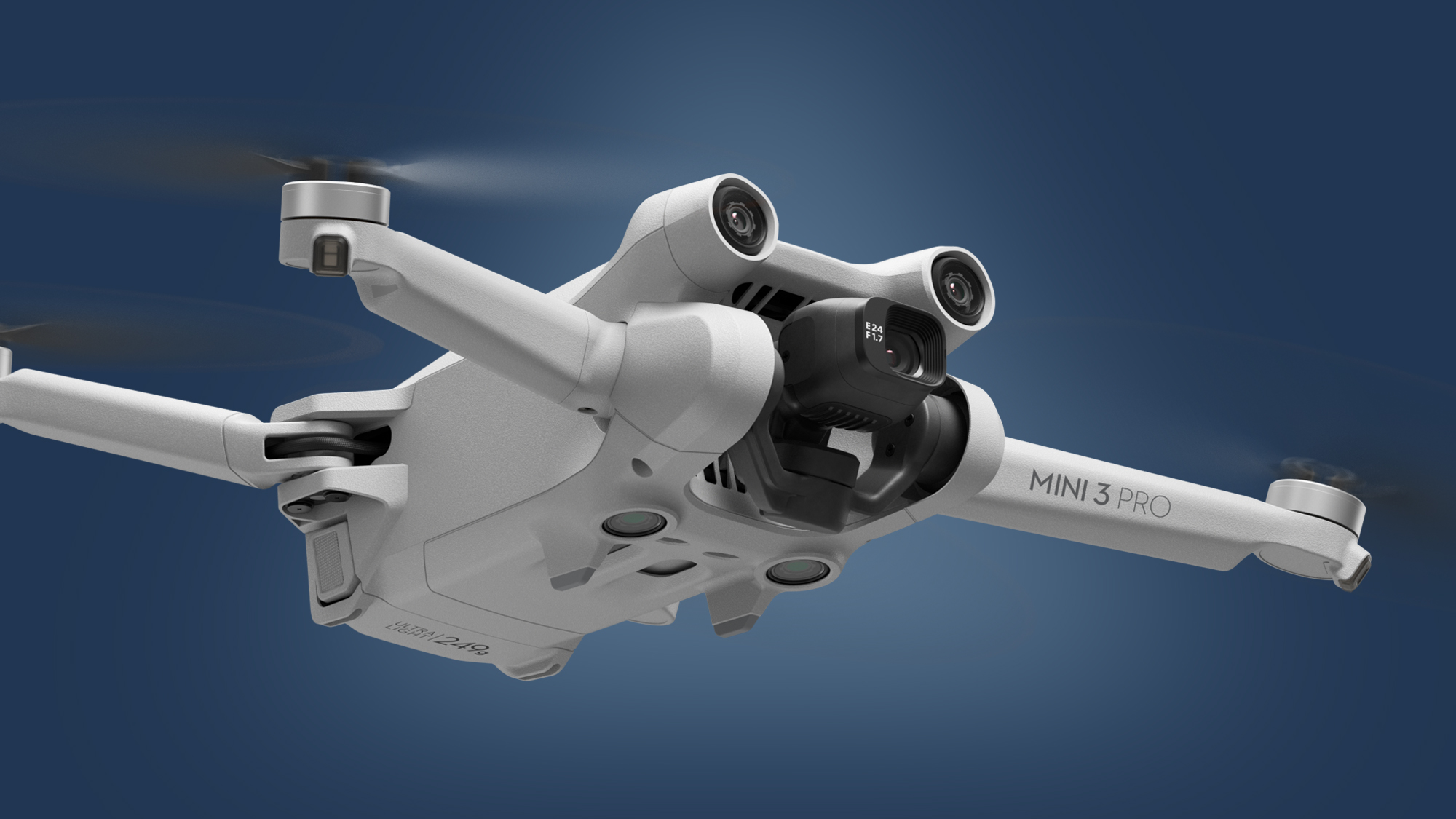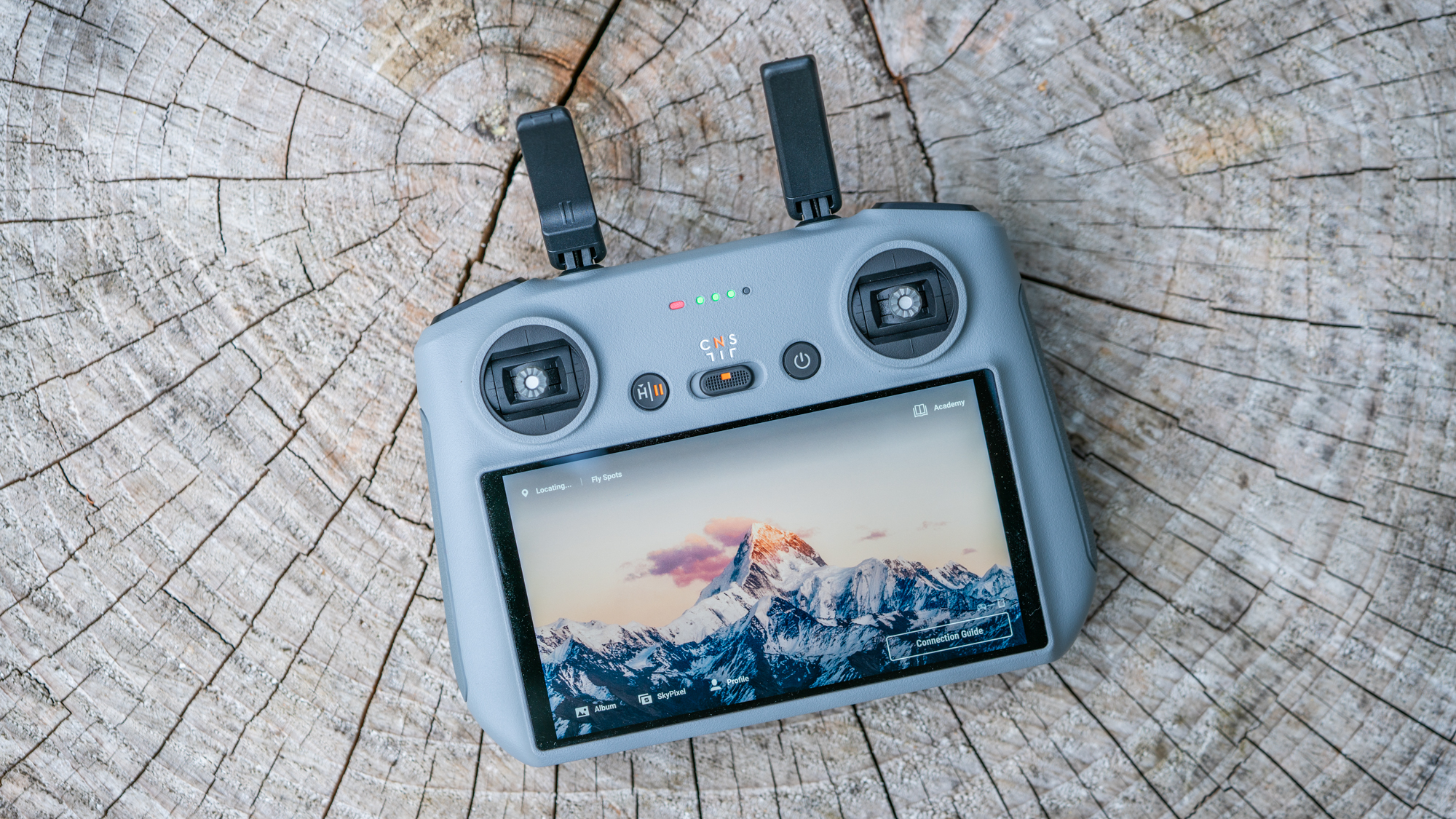The DJI Mini 4 Pro has now fully leaked, but I'll be sticking with my Mini 3 Pro
Are DJI drones starting to hit max altitude?

As is now tradition for DJI drone launches, the incoming DJI Mini 4 Pro has now fully leaked ahead of its official announcement – and as a Mini 3 Pro owner, I'll be happily sticking with my drone, based on the evidence so far.
According to some new Mini 4 Pro retail packaging shared by @Quadro_News (below), there'll be five main differences between DJI's new, sub-250g drone and the Mini 3 Pro, which launched in May 2022. And for me, none of them are big enough to justify the hassle and expense of upgrading from the flying camera that tops our list of the world's best drones.
The Mini 4 Pro's biggest new feature is arguably omnidirectional obstacle avoidance (which we saw recently on the DJI Air 3). This will be an improvement because it'll allow the drone to detect obstacles that are approaching from its sides, rather than just in front, behind or below. That'll be useful for automated QuickShot modes, but so far I haven't had any issues crashing my Mini 3 Pro without the extra sensors.
Another new feature on the leaked Mini 4 Pro packaging is a 4K/100fps mode. Again, that'll be another nice-to-have for video shooters who frequently want to slow down their footage for dramatic effect, but as a photographer that's not high on my priority list. The leak also shows 'HDR video' on the box, but we'll have to wait to see if that differs from the Mini 3 Pro, which only offers a limited form of on-sensor HDR.
👉And here's the back of the box with the specs:Weight 249 g✅Omnidirectional Active Obstacle Sensing✅4K/10Ofps HDR Video ✅48 MP Photo ✅True Vertical Shooting✅34-Min Flight✅20km FHD Video Transmission#dji #djimini4pro pic.twitter.com/vXmIessKGESeptember 4, 2023
The third new feature on the Mini 4 Pro (OcuSync 4.0 connectivity) is hinted at by another spec on the leaked box: 20km (or 12 miles) of FHD video transmission. That's nice in theory, but it isn't possible to legally use that range in most regions, because you need to maintain visual line-of-sight with your drone. I've also found the stability of the connection to my Mini 3 Pro to be absolutely fine, so there's unlikely to be a big improvement there.
OcuSync 4.0 will also ensure that the Mini 4 Pro is compatible with DJI's new DJI RC 2 and RC-N2 controllers. But again, these aren't huge upgrades on the Mini 3 Pro's pads, with the main differences being the increased range, slightly more reliable OcuSync 4.0 connectivity, and some emergency internal storage (in case you forget your microSD cards).
Perhaps the only Mini 4 Pro feature I'll be looking at enviously will be support for waypoints. These let your drone fly through a predetermined path while shooting video, and means you can tell it where and when it should take shots. Right now, my Mini 3 Pro only offers this in Hyperlapse mode, strangely. Whether that's related to my drone's lack of sideways obstacle sensors or something else, it seems unlikely that DJI will add it to the Mini 3 Pro now.
Get daily insight, inspiration and deals in your inbox
Sign up for breaking news, reviews, opinion, top tech deals, and more.
Still, I'll certainly live without it – and most of the Mini 4 Pro's other new features, when that drone lands sometime in September. It'll probably replace the Mini 3 Pro in DJI's lineup, but it could be worth looking out for second-hand versions of the latter if you want to snap up a bargain.
Analysis: DJI drones hit max altitude
When DJI first blazed onto the compact drone scene with the Mavic Pro in 2016, its pace of innovation was pretty thrilling – and also devastating for its rivals, who have gradually dropped out of the skies over the years. Most recently, it was Skydio that was forced to permanently ground its consumer drones.
But in recent years, DJI's drone updates have become increasingly incremental. No longer does it cannibalize its own drones with an exciting new model, just because it can – these days, new models are most likely to deliver small improvements like increased range or marginally better obstacle avoidance.

In some ways, that's more reassuring for drone buyers – you can feel pretty safe buying one of the best DJI drones without fearing that it's going to be blown out of the skies within months by a new technological leap. And that appears to be the case with the Mini 4 Pro – as someone who mainly uses their drone for photography, there simply aren't enough compelling upgrades (from the leaks, at least) to tempt me to upgrade.
The more annoying thing is the feeling that some features – like waypoints – could technically be added to older drones like the Mini 3 Pro, rather than saved for a successor. But fortunately, DJI does also release its SDK (Software Development Kit) for developers to unlock new features – and the Mini 3 Pro was added to list of supported drones in April, even if the DJI RC controller isn't on there.
Based on the leaks so far, I'm pretty confident the DJI Mini 4 Pro will again be one of the best drones you can buy – and most likely, the best compact, sub-250g one of its kind. But the fact the Mini 3 Pro is already a brilliant little drone with surprisingly impressive wind resistance (as I discovered on a recent trip to the coast of Devon, UK) means I almost certainly won't be looking to upgrade. And that could become a challenge for DJI in the future, even if it does now dominate the consumer skies more than ever.
You might also like

Mark is TechRadar's Senior news editor. Having worked in tech journalism for a ludicrous 17 years, Mark is now attempting to break the world record for the number of camera bags hoarded by one person. He was previously Cameras Editor at both TechRadar and Trusted Reviews, Acting editor on Stuff.tv, as well as Features editor and Reviews editor on Stuff magazine. As a freelancer, he's contributed to titles including The Sunday Times, FourFourTwo and Arena. And in a former life, he also won The Daily Telegraph's Young Sportswriter of the Year. But that was before he discovered the strange joys of getting up at 4am for a photo shoot in London's Square Mile.